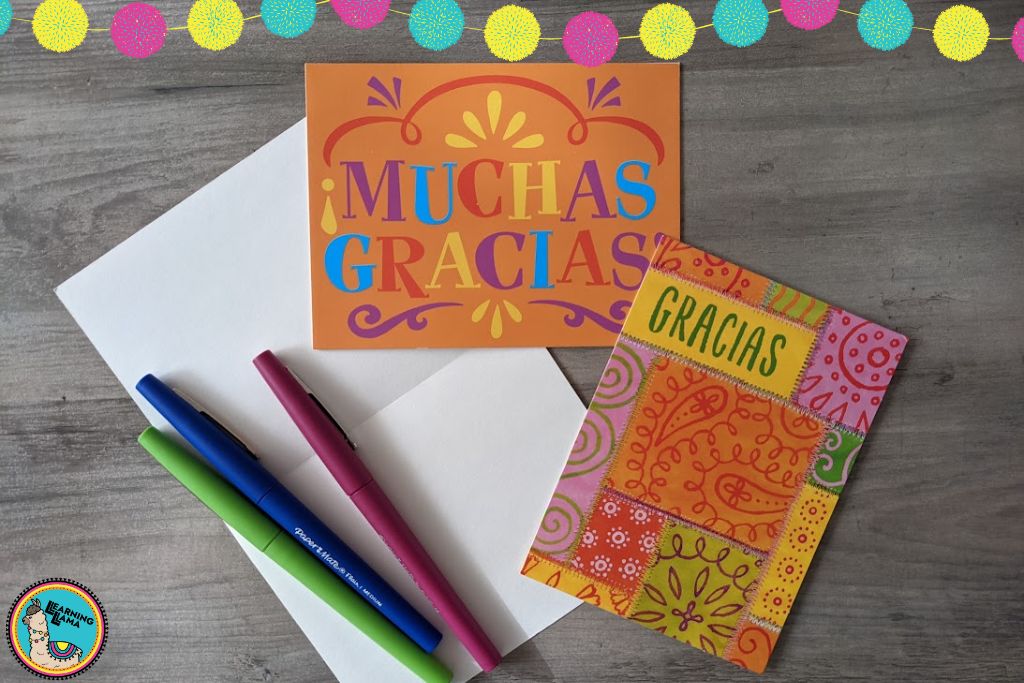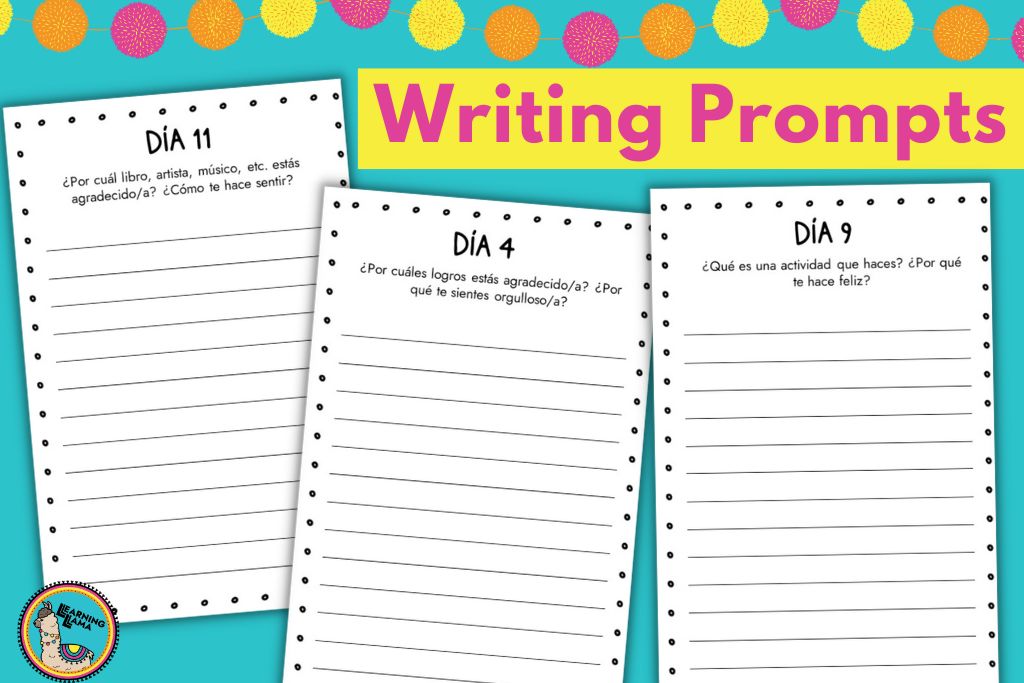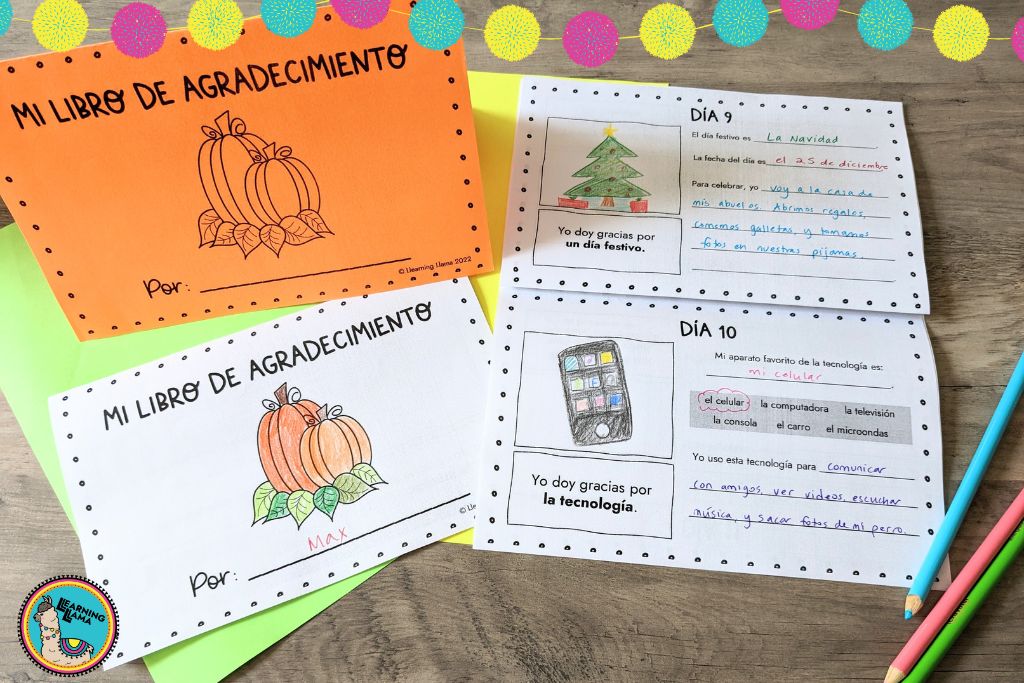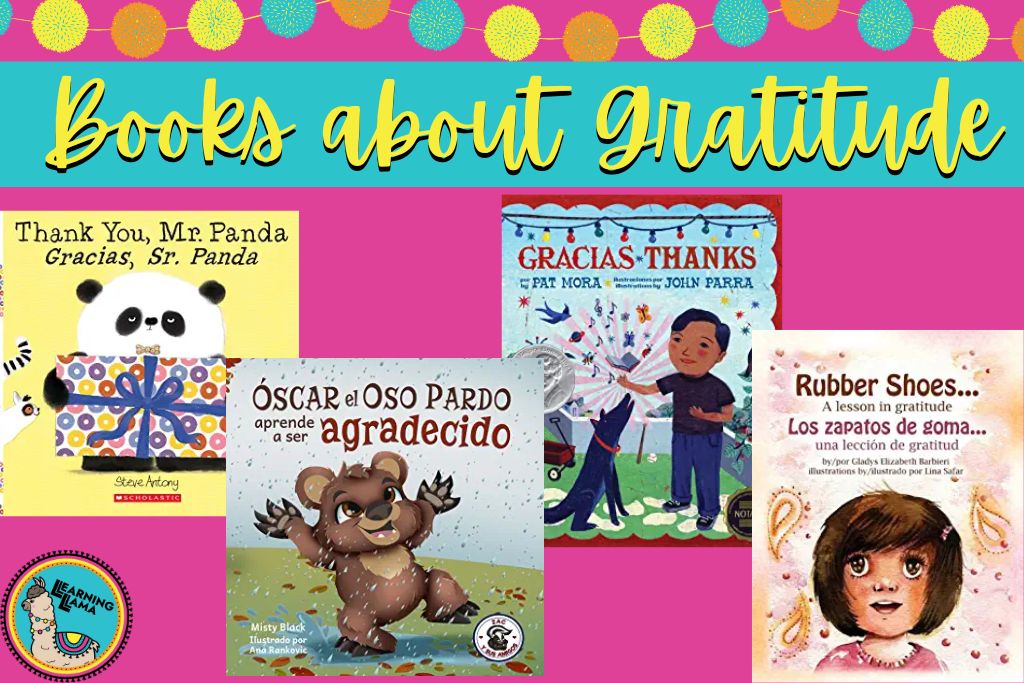Practicing gratitude exercises is such a beneficial activity. Expressing gratitude can reduce toxic emotions, increase positivity, improve health, and build stronger relationships, just to name a few. Last year for Lent, I decided to buy a gratitude journal and write in it every day for the 40-day period of Lent. I noticed that I was much more aware of my blessings, overall more joyful, and had less toxic emotions like jealousy or irritability. If such simple gratitude exercises could have such a positive impact on me, why not share this valuable exercise with my students?
What are you thankful for this year? For me this year, the list of things I am thankful for could go on and on, but I’ll name my top five: my first baby who brings us so much joy, my supportive and loving husband, the ability to work from home and spend time raising my son, our adorable and upbeat dog Luna, and all of my abilities including eyesight, hearing, walking, etc. This November, take time to practice gratitude with your students. It doesn’t need to be a formal lesson, or you could design a purposeful, organized lesson plan. Either way, as long as you devote time to giving thanks, see how both you and your students have a positive shift in attitude and gratitude!
1. Grateful Bulletin Board
Use a blank bulletin board as a basis for a “Estoy agradecido/a por…” board. This can be something informal that students can do during their free time or as bell ringers during the entire month. Put a small table next to your board, and provide students with sticky notes, markers, and a stapler. Make a goal for your students to each write at least 5 things they are thankful for by the end of the month. They simply write the word or phrase in the target language and add it to the board. I recommend having them staple it on the board because if you want it to last through the entire month, the sticky notes may fall off after a short time.
By the end of the month with these gratitude exercises, you will have a beautiful gratitude bulletin board. Invite the other world language teachers to participate as well. If you have space in the hallway, this could be a beautiful collaborative effort among your department, or even your school. Bringing some gratitude and positive energy into the hallways will bring smiles to everybody’s faces who pass by!

2. Write Thank You Notes
Have you ever received a thank you note from a student? Didn’t it just make your day… or maybe your year? You can take part in making someone else’s day with thank you notes. Once a week during November, have students write a thank you note to a different person. You may want them to do this in the target language, and then they can translate it for the person who may not speak Spanish. Or, just take five minutes and have them write a thank you note in English. Sometimes it is okay to take a break from content and target language work so students develop skills like empathy, compassion, and gratitude. Consider writing thank you notes to a teacher, police officer, fire department, librarian, cafeteria workers, janitors, secretaries, administration, etc.
3. Writing Prompts
Daily gratitude exercises help foster a habit of gratitude. For advanced classes, maybe level 3 through AP, you may consider fun writing prompts that could be used as a daily journal entry, bell ringer, or even as an essay. Sometimes when we ask our students “What are you thankful for?”, we always get the same responses: family and friends, my pets, food. While those are very important things to be thankful for, sometimes I wish my students would dig a bit deeper to realize how truly blessed they are. With these prompts, they are forced to think outside the box and realize that gratitude can be much more than surface level things. Each day, give them a specific category or item to be thankful for: technology, nature, a memory, etc. Then, they must choose something within that category to explain why they are thankful for it. These gratitude exercises will help your students realize that gratitude can be practiced anywhere, anytime and hopefully helps them to develop a lifelong habit.

4. Gratitude Journal
Even novice students can benefit from gratitude writing prompts, as long as you provide them with scaffolded instructions and useful vocabulary. Take a look at this 15-day gratitude journal for novice students. The novice level journal incorporates word banks and guided questions to help students express their gratitude in complete ideas. A journal is a great idea for novice students because they can draw, write simple sentences and by the end of the 15 days have a product they are really proud of!

5. Gratitude Collage
Some students are visual learners or artists, and they would benefit from creating gratitude collages. Each student can make a collage of things they are grateful for. They can create drawings or print images from the computer. Then, arrange and glue them on a blank paper. To incorporate Spanish, they can write a description of their collage or present in small groups. Then, post the collages around your classroom for other students to see. If you can find old magazines or newspapers, this makes it a bit more fun for students. Ask your local library or media center if they have anything they are getting ready to recycle. You might even find someone trying to get rid of boxes of old magazines on Facebook Marketplace for free!
6. Read a Book
Story time is a great way to demonstrate the value of gratitude. Find a book with the moral of the story being the importance of giving thanks and read it with your students. Turn it into a comprehensible input lesson by first introducing vocabulary. Then, have students retell the story as you show images from the book. Or do a close reading, which you can learn more about here. I always say, even high school students can benefit from reading short stories and children’s books in the target language. Here are a few book suggestions:
- Óscar el oso aprende a ser agradecido – A grumpy bear learns to give thanks and have a positive attitude.
- Gracias • Thanks (Bilingual Edition) – A young boy practices giving thanks for the little things in life.
- Los zapatos de goma: Una lección de gratitud – A girl is upset with the rubber shoes her mom purchased for her, but when they donate them to a girl in need, her reaction is much different.
- Gracias, Sr. Panda – Panda gives gifts to all of his friends, but they are ungrateful for his gifts because they aren’t exactly what they are looking for.

7. Gratitude Poems
Acrostic poems are some of the best creative writing tasks for language learners. There are very few requirements other than the first line of each poem beginning with a specific letter. Students don’t need to count syllables or rhyme words. Take the word “gratitud” or “agradecido” and students can write complete sentences for each letter expressing something that they are grateful for. For a more visually appealing poem, they can also draw something to represent each line.
Other poems that students can write are shape poems, diamond poems, odes, and more! Check out this blog post with the different styles of poems and even pre-writing activities for poetry lessons. You’d be surprised at how these poems can be modified for novice through advanced learners.
Now, these are just seven ways to teach gratitude, but I will say that the most impactful way is to simply model gratitude on a daily basis. Say “gracias” as often as you can. When a student volunteers, express gratitude, when a student holds the door open, tell them thank you, and one of my favorites is when a student asks how I am doing or how my weekend was, I always let them know that it means a lot to me that they asked about me.
If you choose any of these other gratitude exercises, you should also complete it, too. Make your own gratitude journal to show them; create a poem and display it; add sticky notes to the bulletin board.






One Response